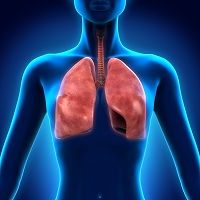Technology Shows Insight into COPD Human Disease Modeling
A new analytic method for studying chronic obstructive pulmonary disease (COPD) and asthma can be conducted outside the body, according to findings published in Nature Methods.

A new analytic method for studying chronic obstructive pulmonary disease (COPD) and asthma can be conducted outside the body, according to findings published in Nature Methods.
Researchers from Wyss Institute for Biologically Inspired Engineering at Harvard used their “organ on a chip” technology to develop a model of a human’s small airway to study it outside the human body.
The researchers noted that COPD and lung inflammatory diseases are the third leading cause of mortality worldwide, and by studying these cases outside the body, they are able to gain new insights into the disease mechanisms, identify biomarkers, and test new drug therapies.
The investigators added that even though the disease is known to affect the alveoli, exactly how the inflammation impacts the pathological processes like the circulation of white blood cells or how exacerbations are triggered.
“Inspired by our past work using the organ on a chip approach to model the lung alveolus, we created a new microfluidic model of the lung small airway that recapitulates critical features of asthma and COPD with unprecedented fidelity and detail,” senior author Donald Ingber, MD, PhD, explained in a press release. “Now with this micro-engineered human lung small airway, we can study lung inflammatory diseases over several weeks in chips lined by cells from both normal donors and diseased patients to gain better insight into disease mechanisms, as well as screen for new therapeutics.”
According to the statement, one of the reasons this technology is so valuable is that these types of diseases cannot be studied in human or animal patients and no effective therapies exist to reverse or curb the effects of the diseases.
The researchers designed a micro fluid device containing a fully mature human airway apithelium. A second channel on the device was linked with a human vascular endothelium, allowing the researchers to observe the white blood cells and nutrients flowing and living in the microsystem, which was maintained over weeks.
The researchers then introduced inflammatory asthma and COPD conditions using an immune factor or using COPD patients’ epithelial cells. In both instances, the researchers saw high disease and cell type specific changes, in addition to being able to exacerbate the conditions with viral or bacterial simulation agents.
The study authors provided a proof of principle report demonstrating that their technology can be used as a discovery tool for disease specific drugs and biomarkers.
“This novel ability to build small airway chips with cells from individual patients with diseases like COPD positions us and others now to investigate the effects of genetic variability, specific immune cell populations, pharmaceutical candidates and even pandemic viruses in an entirely new and more personalized way; one that will hopefully increase the likelihood of success of future therapeutics,” concluded Ingber.